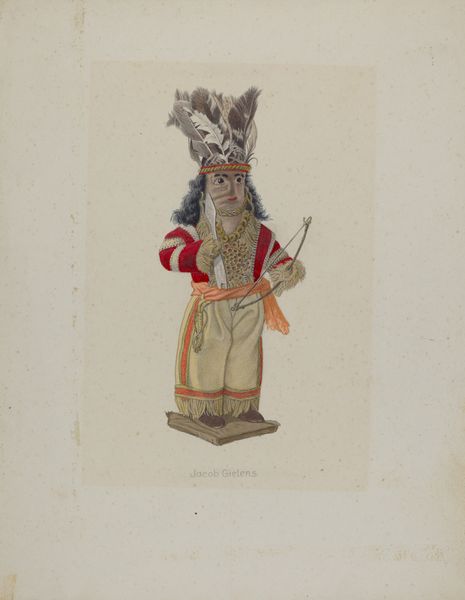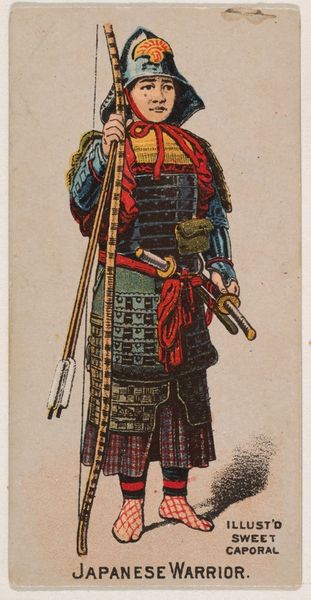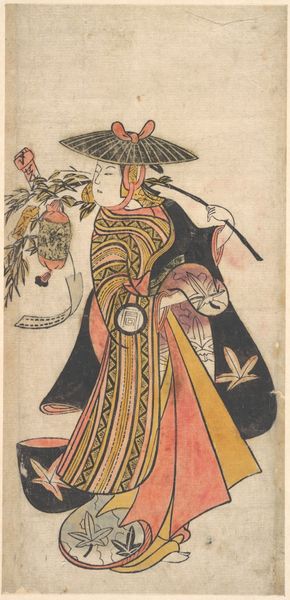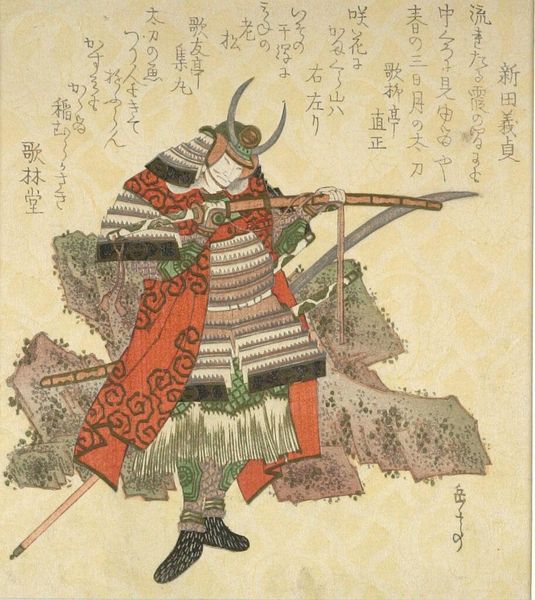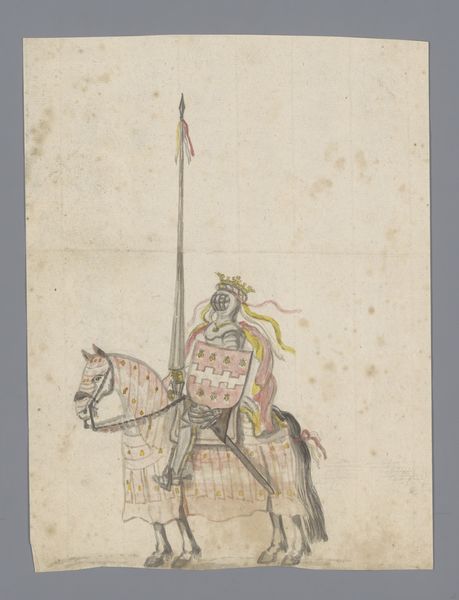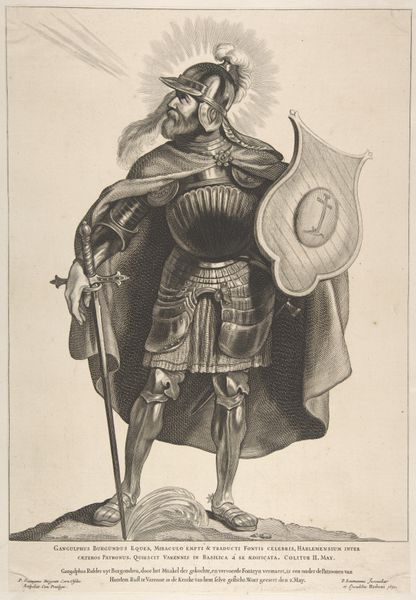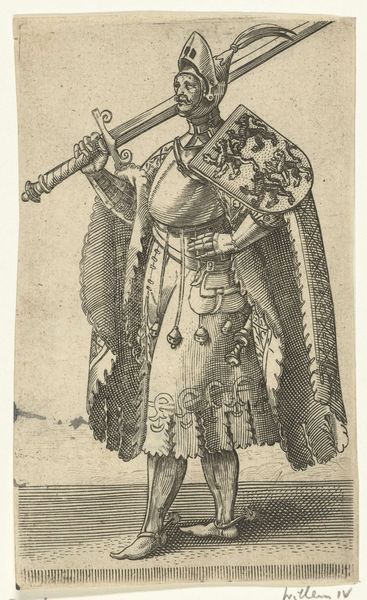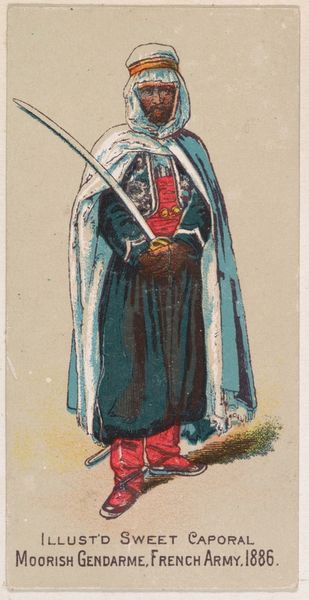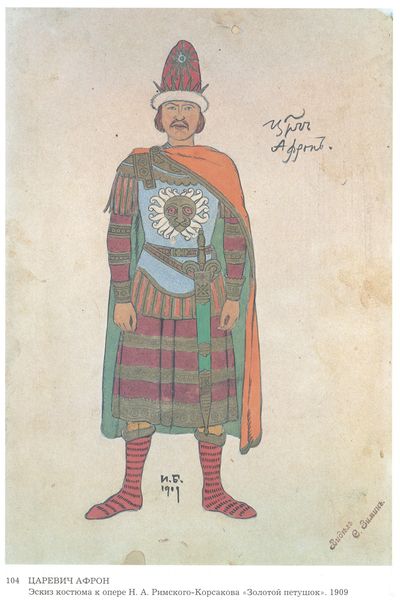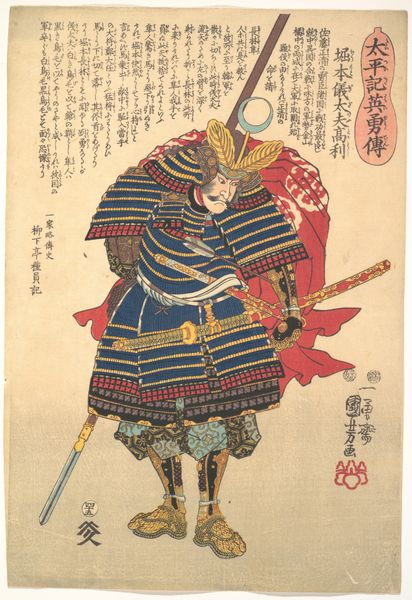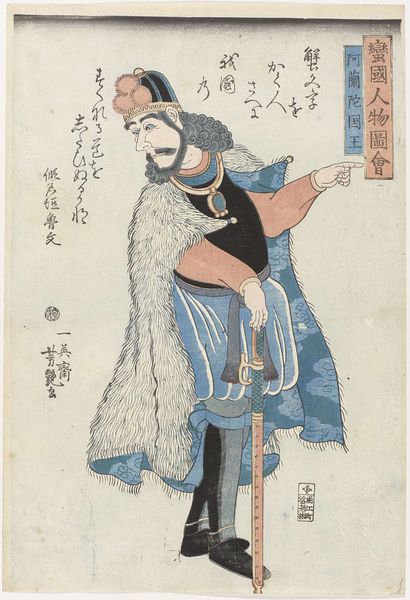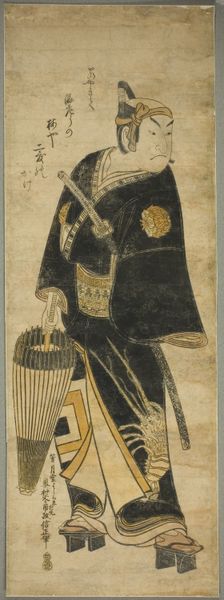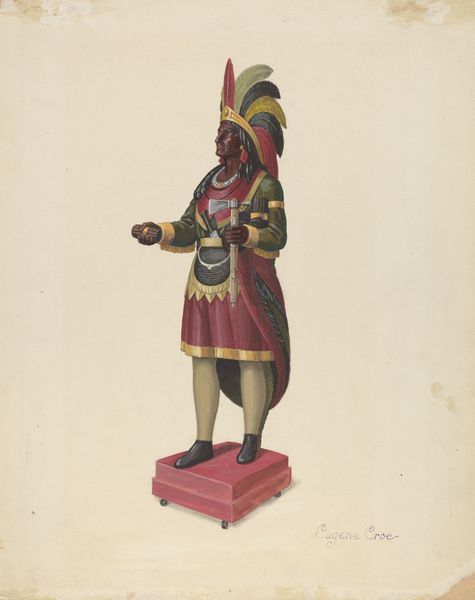
drawing, print, watercolor
#
portrait
#
drawing
# print
#
asian-art
#
figuration
#
watercolor
#
men
#
sketchbook drawing
#
watercolour illustration
Dimensions: 7-11/16 x 5-3/8 in. (19.5 x 13.6 cm)
Copyright: Public Domain
Curator: Our next stop presents a watercolor and print piece created between 1797 and 1805 by William Alexander. It's called "An Officer of the Corps of Bowmen," now residing at the Metropolitan Museum. Editor: It’s… surprisingly delicate. For a military figure, the pastel colors and fine lines give it an almost dreamlike quality. Curator: That subtlety is interesting, especially considering Alexander’s role within broader Anglo-Chinese relations at the time. As a draughtsman attached to the Macartney Embassy to China in 1792–94, he was responsible for documenting the people and customs encountered during a pivotal, and ultimately fraught, moment of cross-cultural exchange. Editor: I’m struck by the flatness of the figure, which emphasizes pattern and detail. The intricate design of the armor and flag become more important than the individual’s form. Are those calligraphic elements on the flag? Curator: Yes, the characters and their presentation would speak to the regiment’s identity, perhaps also indicating a certain level of symbolic defiance. The Macartney mission occurred during a period of immense social change; consider the Bowmen as a Manchu military institution with a strong identity as Beijing increasingly favored Mongol and Han soldiers. Editor: So, the watercolor itself becomes a record of these social complexities, this kind of quiet tension simmering beneath the surface? I wonder how accurate it is. Curator: That’s a critical point to consider. While seemingly ethnographic, Alexander’s work is undeniably filtered through a Western gaze, actively participating in the construction of “the Other” for a European audience hungry for the exotic. Editor: That Western perspective almost feels baked into the artistic style itself—that emphasis on the surface, the decorative—it distances us. The officer becomes an object, a curio. Curator: Absolutely. The act of representation itself carries inherent power dynamics and the politics of seeing, even when seemingly neutral. Editor: Considering Alexander’s placement in both time and space has drastically shifted my perception of this illustration. It truly opens the way we consider representation and identity in art. Curator: Indeed, this work is far more than just an image; it's a layered historical document that begs us to interrogate not only its subject but also its very creation.
Comments
No comments
Be the first to comment and join the conversation on the ultimate creative platform.
